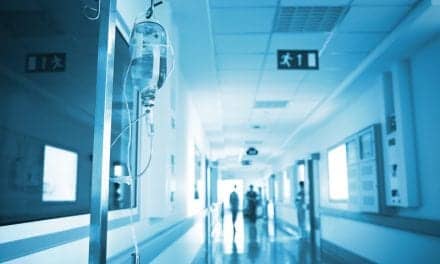 |
Marine Corporal Samuel Reyes, Jr, nearly died on a road outside Fallujah, Iraq, 3 years ago. In fact, in an earlier era before we had resources like advanced battlefield medicine and modern body armor, he certainly would have died. The suicide bomb attack he survived left him with such severe shrapnel injuries that his heart had to be defibrillated by medics in the helicopter on the way to the military hospital. After 18 months of painful recovery, it also left him with something else, a chronic traumatic brain injury (TBI) complicated by posttraumatic stress disorder (PTSD) that gave him memory problems and nightmares.1
For Reyes, the injury that would impact his life the most was the one that was the least visible at the time of the accident and in the months following it—the injury to his brain. TBIs have been called the silent epidemic, because unlike wounds, broken bones, and other injuries from trauma, they are not visible to the naked eye. Consequently, mild TBIs that occur without visible damage to the head and without the dramatic signs of moderate to severe TBIs often may not be discovered until weeks or even months after the injury.
| Want more articles about TBI? Access theonline archives.
|
Most TBIs in the United States still occur as the result of traffic accidents, falls, crimes, and sport injuries, but because TBIs have become the “singular injury of the Iraq conflict,”1 the silent epidemic is gaining much-needed attention. Henry L. Lew, MD, PhD, of the Stanford University School of Medicine, the Veterans Affairs Palo Alto Health Care System, and the Defense and Veterans Brain Injury Center, says that sleep problems are the number one complaint he sees in his patients with TBIs. However, the relationship between chronic TBIs and sleep disorders is still poorly understood and underappreciated.2
How TBIs Impact Sleep
According to Centers for Disease Control and Prevention (CDC) statistics from 2006, approximately 1.4 million people suffer a TBI annually in the United States.3 Of those, 50,000 die, 235,000 are hospitalized, and 1.1 million are treated and released from an emergency department. The CDC estimates that at least 5.3 million Americans, about 2% of the US population, currently have a long-term or lifelong need for help to perform activities of daily living as a result of a TBI. However, the problem may be much larger than that, the CDC notes, as the number of people with TBI who are not seen in an emergency department or who receive no care is unknown.
One study found that about 50% of people with a TBI complain of sleep problems after the injury.4 But other researchers have put the number much higher. Guilleminault et al reviewed 20 TBI cases and concluded that impaired daytime functioning and somnolence may be present in as many as 98% of all patients with TBI, and sleep-disordered breathing (SDB) is also common.5
Most research on TBIs and sleep has been in patients with moderate to severe TBIs and in the acute phase of TBI (ie, the period immediately following the injury). Here physicians and scientists have studied how damage to specific areas of the brain thought to control different aspects of sleep has led to phase-shift disorders, narcolepsy, excessive daytime sleepiness (EDS), SDB, and insomnia. For example, damage to the respiratory control centers in the medulla can create SDB. If the reticular formation—a network of neurons spread centrally throughout the brainstem that play a role in wakefulness and rapid eye movement (REM) sleep—is involved in the TBI, the patient may have trouble falling asleep and/or staying asleep. The patient could also develop problems with REM sleep and narcolepsy. Finally, should the suprachiasmatic nucleus (SCN)—a group of neurons in the anterior lobe of the hypothalamus that set the pace of one’s circadian rhythm—be damaged, the patient may develop a delayed or advanced sleep phase or a non-24-hour sleep and wake cycle.
But do these problems also plague people with chronic TBIs? New research indicates that this may be the case. Narayan P. Verma, MD, and his colleagues at the B.G. Tricounty Neurology and Sleep Clinic in Warren, Mich, evaluated 60 patients with sleep-related complaints following TBI over a 2-year period and found that the TBI may be associated with virtually all common sleep disorders, not just the ones typically linked to TBI like narcolepsy and phase-shift disorders.6 The researchers put the subjects through a battery of tests, including a detailed medical history, a neurological examination, an assessment of TBI severity using the Global Assessment of Functioning (GAF) scale, the Epworth Sleepiness Scale, and, for many of the subjects, polysomnography, the Multiple Sleep Latency Test (MSLT), and psychological self-report measures like the Hamilton Anxiety Scale (HAS) and the Beck Depression Inventory (BDI). The results indicated that half of the TBI patients had EDS, a quarter had insomnia, and nearly a third had clinically significant sleep-related breathing disorders—percentages that were significantly higher than those found in the general population.
Some have theorized that the high prevalence of sleep disorders in people with TBI may partly be due to the fact that people with underlying sleep disorders may be drowsy and therefore more prone to accidents that cause TBIs. One recent study, for example, found that people with OSA were at much greater risk for severe auto accidents.7
However, Verma’s extensive testing indicated that the sleep disorders he and his colleagues found were related to the TBIs because there was a lack of history of sleep complaints prior to the head trauma and the patients did not have physical characteristics linked to upper airway obstruction as indicted by normal flow volume loops and benign results of an examination of their oropharyngeal areas, chins, and temporomandibular joints.
Verma theorizes that TBIs may cause sleep disorders not only directly, as observed in cases where localized damage to an area of the brain that controls sleep creates a sleep disorder, but also more indirectly. For example, collateral damage to the neck and back may create pain that interferes with sleep. In addition, it is not uncommon for patients who suffer TBI to gain weight because of medications used to treat the TBI, problems resuming exercise after the TBI, or posttraumatic mood disorders, and this can, in turn, lead to weight-related OSA. The “complex and multifactorial pathogenesis” of sleep disorders linked to TBI was particularly indicated by the fact that the GAF scores—the measures of TBI severity—correlated with some but not all measures of sleep disruption in the patients, Verma wrote. A second study of prevalence and consequences of sleep disorders in TBI also found that sleep disorders did not have any specific relationship with TBI severity or the presence of lesions in the brain in CT scans.8
The Importance of Connecting Sleep Disorders and TBIs
Studies are still needed to confirm whether diagnosing and treating sleep disorders improve outcomes for TBI patients, but intuitively it makes sense. Studies have shown that in healthy people who volunteered to undergo sleep deprivation experiments, a lack of sleep made it harder to remember and to perform complex cognitive tasks—precisely two problems that plague TBI patients. In addition, irritability, depression, and perception of pain all can be worsened by sleep deprivation. As the TBI patients struggle to regain some measure of normal cognitive functioning and improve their quality of life, their rehabilitation efforts are likely that much harder when they are sleep deprived.
In addition to the importance of treating sleep disorders to improve a TBI patient’s quality of life and chance of rehabilitation success, there are insurance considerations that can be very important to patients, Verma points out. Therefore, it is vital that physicians and researchers accumulate data to prove to insurers that a sleep disorder that develops after a TBI is linked either directly or indirectly to the incident that caused the TBI.
The Sleep Physician’s Role
Neurologists who see TBI patients may focus on treating the symptoms of a sleep disorder with medication. Drugs like modafinil (Provigil) and sodium oxybate (Xyrem) have been approved for treating EDS. Antidepressants like monoamine oxidase inhibitors, selective serotonin reuptake inhibitors, and norepinephrine reuptake inhibitors may also be prescribed. Finally, insomnia is often treated with sleep aids like zolpidem tartrate (Ambien), zaleplon (Sonata), eszopiclone (Lunesta), and ramelteon (Rozerem).
However, there could be benefits to patients if neurologists work more closely with sleep specialists to look for the underlying causes of EDS and insomnia in TBI patients. If nearly a third of TBI patients may have SDB—as Verma’s research indicates—then their EDS and insomnia may be better treated with CPAP than with drugs alone. The fact that sleep disorder screening questionnaires are not more widely used in TBI patients is, Verma says, a sign of the continuing need for awareness of sleep disorders in other medical disciplines. “Sleep disorders need to come into the mainstream,” he says, adding that “it does not take very many questions to screen for sleep disorders.”
By the same token, sleep specialists need to be aware that TBI may be an underlying cause for a sleep disorder. At B.G. Tricounty Neurology and Sleep Clinic, patients are typically asked if they may have suffered a head injury in the past, especially if the patient does not fit the typical profile for the suspected sleep disorder. For example, OSA is most common in overweight individuals, the middle aged, and men, so if a young, thin woman is referred for suspected OSA, a TBI could be the cause. Likewise, if a patient presents without a family history of narcolepsy and is at an age past when narcolepsy typically develops, a TBI may be to blame.
For Reyes, it took 9 months from the time of the accident before a physician finally recognized that he was suffering from a chronic TBI and Reyes could be transferred to the VA’s specialized brain-injury unit in Palo Alto, Calif. With growing awareness of TBIs and inclusion of sleep specialists in interdisciplinary TBI treatment, perhaps other TBI patients will not have to wait so long and struggle so hard to recover from their injuries.
Lena Kauffman is a former editor of and a contributing writer for Sleep Review. Contact her at.
References
- Riccitiello R. Casualty of war: damaged brains are emerging as the singular injury of the Iraq conflict. A soldier’s story. Newsweek Web Exclusive. Available at: http://ptsdcombat.blogspot.com/2006/03/newsweek-covers-combat-ptsd-and-brain.html. Accessed September 6, 2007.
- Theodorou AA, Rice SR. Is the silent epidemic keeping patients awake? J Clin Sleep Med. 2007;3:347-348.
- Centers for Disease Control and Prevention. National Center for Injury Prevention and Control. TBI Overview. September 19, 2006. Available at: http://www.cdc.gov/ncipc/tbi/overview.htm. Accessed September 6, 2007.
- Parcell DL, Ponsford JL, Rajaratnam SM, Redman JR. Self-reported changes to nighttime sleep after traumatic brain injury. Arch Phys Med Rehabil. 2006;87:278-285.
- Guilleminault C, Faull K, Miles L, Van den Hoed J. Post-traumatic excessive daytime sleepiness: a review of 20 patients. Neurology. 1982;33:1584-1589.
- Verma A, Anand V, Verma NP. Sleep disorders in chronic traumatic brain injury. J Clin Sleep Med. 2007;3:357-362.
- Mulgrew A. Severity of motor vehicle crashes in obstructive sleep apnea patients. Poster presented at: American Thoracic Society 2007 International Conference; May 20, 2007; San Francisco.
- Castriotta RJ, Wilde MC, Lai JM, et al. Prevalence and consequences of sleep disorders in traumatic brain injury. J Clin Sleep Med. 2007;3:349-356.





